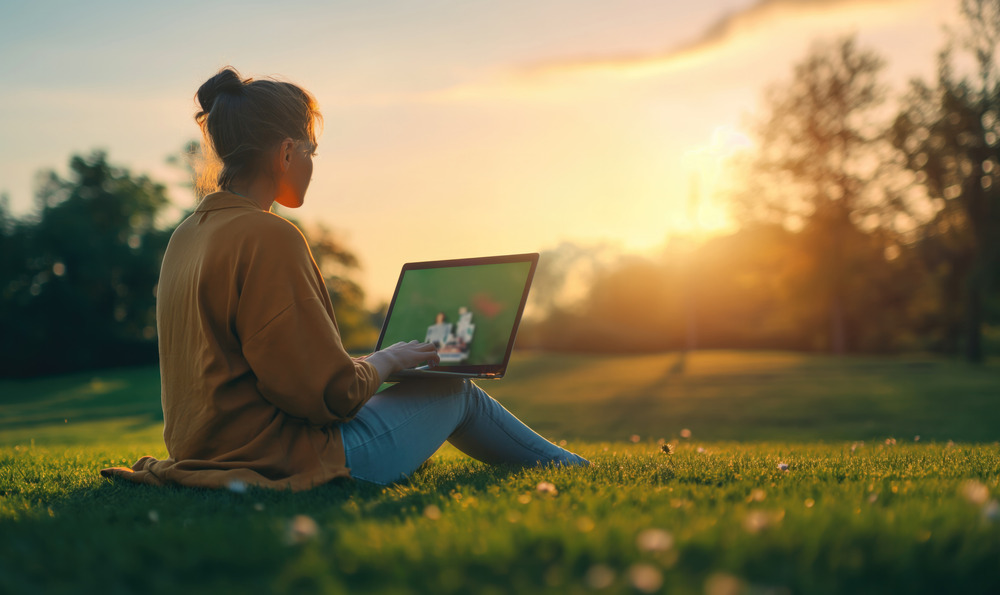How to Balance Your Digital Life and Offline Life for Better Wellbeing
How to Balance Your Digital Life and Offline Life for Better Wellbeing

Is this the time to take a little break from the buzzes and beeps your tech gear makes? Digital detox is more than just a fad. It is a choice to step away from those endless streams of alerts and screening for your overall well-being.
It comes as a shock to how much screen time or digital life has leaps over bounds irrespective of our age. In our post today, we are going to highlight bringing a balance to your online and offline life and finding a sweet spot with your considerable use of tech. Let us find out how better balance in life can regain your well-being.
Understanding Digital Detox and Its Importance
Digital detox revolves around the thought of putting your gadgets down for a while and soaking in the world that is around you. It is setting the time you opt to cut your ties with tech and get back to the live moments and face-to-face chats. It is the ideal time to bring in a healthier balance between real-life deeds and online reels. It offers you a scope to reboot while enjoying activities away from the screen. Choosing to unplug helps you explore the real joys in life that the screen fails to give you.
The growing prevalence of the digital world is advancing considerably, which leads us to choose to go tech-free once in a while. This can boost our well-being and lead to a soothing harmony in our lives. So when exactly should your digital life hit the pause button?
Identifying the Need for a Digital Detox
These are a few questions to ponder on:
- Are you online most of the time?
- Is your sleep disrupted by waking up to check your phone?
- Do you appear lost without your phone?
These could be signs you need a detox. It is time to spot the clues that you are too wrapped up in your digital world. You may also require a detox if you are:
These are the probable signs that you need a perfect balance in life. It is important to recognize the signs that you are wrapped around in your online world. You might even:
- Feel angry quickly or get frustrated seamlessly
- Appear jittery without your tech while a detox
- Loss of sleep as you hardly stop scrolling
- Drowning yourself to the notifications and alerts
- Lack of focus on the real job without looking at your phone
- Missing out on the real-time causes you to be buried in the screen
- Facing family issues due to excessive time spent online
- Feel unproductive both at home and work
Did you find any of these in your life? These are some clear habits that you are getting lost in the digital life. Balancing your online and offline world can bring a better balance to your well-being.
Digital Wellbeing Tips
Individuals might often find themselves struggling with digital addiction due to its overuse, which impacts our productivity, self-esteem, relationships, mental/physical health, and sleep. It is the reason why we have brought you the ideal tips to create clear boundaries and practice self-care to add balance to your life and promote well-being.
Track Your Screen Time
If you want to take steps to improve your digital well-being, a good place to start is to gain a better understanding of how you’re using your devices, especially if you feel like you often lose track of time when you’re using your phone or computer. You can track your tech use in various ways, including through the built-in screen-time track of your iPhone (Settings > Screen Time) or your Android device (Settings > Digital Wellbeing and parental controls), using an app like Freedom, Moment, and Breakfree or just recording it manually in your journal.
Turn Off Notifications
Do you read messages, emails, or social media notifications as soon as you get them? Do you do this on autopilot? That may be a sign that your notifications are controlling your life and interfering with other work and pursuits. So, customize the apps that you’ve decided to keep to limit distractions and ensure you manage when and where you’re on your devices. For example, turn off push notifications, or if you do need the notification (e.g., as an incentive to perform a habit to practice), decide when and how often you get notifications.
Set Daily Limits on Your Devices and Apps
Limit your daily usage of the app on your phone: you may set timers on the app via Digital Wellbeing for customers of Android devices, while iPhone or iPad customers can use Screen Time to set limits on usage of the app. If you are using streaming and/or social media, disable the autoplay and endless scroll features that allow you to binge an entire season or infinite scrolling to waste your day away. You can even make up your own rules to limit your use, like “If I’m with friends, then I’m going to put my phone away,” or “I’m going to put my phone in another room when I’m eating meals.”
Create Tech-free Spaces in Your Home
Is your phone pursuing you? Does it know you so well it stands watch in the bedroom with you and the toilet? If so, it could be time to establish boundaries in this co-dependent relationship! To avoid tech, try to carve out some spaces in your home that feel tech-free, like your bedroom or — if that’s not possible — your bed.
Start and End Your Day Tech-free
For a lot of people out there, phones are the first things we grab in the morning and the last things we put down at night. If you can’t transform your bedroom into a tech-free zone, take advantage of settings like bedtime mode on your phone to help you establish a healthier night routine, set your phone to airplane mode at night to prevent notifications from interrupting your sleep and keep your phone across the room so you won’t be tempted to reach for it as a default response. Also, consider what you’d like to replace scrolling with when you start and end your day instead, such as journaling, reading, or taking a walk.
Take Breaks From Your Phone
From putting your phone away for a few hours to totally unplugging from technology for an entire weekend or week (a ‘digital detox’), breaks from the digital world have a great positive effect on your well-being and give you the freedom to immerse yourself in what really matters to you. Take those breaks to go outside, connect with the people that you love, get creative, or do something that you enjoy. If you cannot release your phone because of being on call, place your phone in a manner that you can receive the only calls and messages – in that way, you’re available, yet not swarmed with ping and buzz.
Set Digital Boundaries for Work
How regularly are you interrupted by work notifications when you are supposed to be having a relaxing evening? What about checking your work email when you’re supposed to be enjoying your weekend away? Just as many of us always have phones with us, many of us also always have work with us 24/7. So, the best way to guard your time and recharge is by creating distance from work distractions and temptations. Set some digital boundaries by enabling the do-not-disturb and out-of-office features, logging out of your work profile and apps once your workday is done, and informing your colleagues that you are not available outside of office hours.
Limit Online “Social Snacking”
But, like eating surgery snacks that are only minimally filling at best but whose effects quickly wear off, followed by impending sugary hunger, social snacking online has a mirrored effect. At first, scrolling through our friends’ posts can feel as rewarding on the brain as it makes us feel in the moment, up-to-date, and connected. But in the long run, we may find ourselves lacking the warmth of meaningful interaction that helps create our sense of belonging and general well-being. In addition, passive social media use can fuel social comparison, which can make us feel inferior and envious of the lives of others.
Takeaways
Technology will always be an integral aspect of our day-to-day lives, but that does not necessarily mean we have to descend to the pits of distraction, comparison, and sleeplessness. Instead, we have to digitally thrive as well as safeguard and enhance our mental and physical health by implementing digital self-care strategies and leveraging technology to our benefit. Keep in mind that it’s not about getting rid of the screens altogether but creating a healthy relationship with technology.






